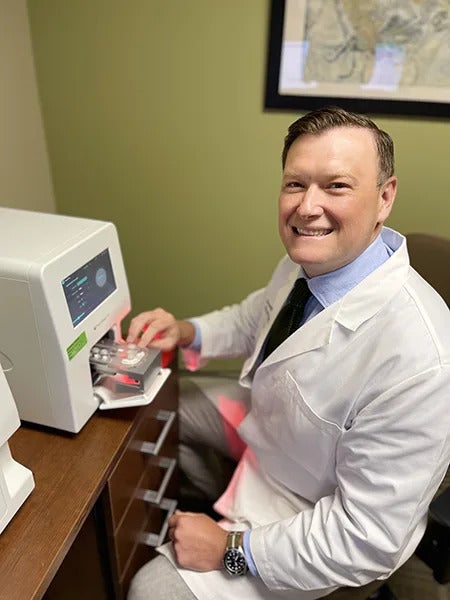Genetic Testing for NICU Hearing Protection

Valley Children’s Hospital is the first in the nation to investigate a groundbreaking genetic test that may help doctors quickly determine if a newborn is at risk for hearing loss when treated with aminoglycoside, a common type of antibiotic – and a quick, non-invasive swab from a baby’s cheek may make a significant difference. If the test is approved, with results available in under an hour, doctors have the information they need to prevent permanent hearing damage before it happens.
Aminoglycosides are often used to treat infections in fragile newborns, particularly in the neonatal intensive care unit (NICU). While these antibiotics are effective against bacteria, they can also harm key proteins essential to hearing development – a risk that is significantly higher for babies with certain variants of the MT-RNR1 gene.
Research suggests that these genetic differences may be responsible for at least 1% of hearing loss in children before they develop language.
Lowering Risk, Saving Lives
Presently, testing for this genetic marker takes weeks, delaying critical care decisions. Valley Children’s Precision Medicine Program is leading the way in hoping to make genetic testing fast and accessible with this innovative testing available at Valley Children’s. Using a small saliva sample, doctors can analyze the baby’s DNA in a machine no bigger than a desktop printer and hope to receive accurate results in less than an hour.
“Presently, we have to wait weeks for the results of MT-RNR1 genetic testing. Now, we hope to have results back in under an hour. That gives us plenty of time to choose a safer antibiotic to treat a seriously ill baby.”
Dr. Jeremy Woods, Geneticist and Director of Valley Children’s Precision Medicine Program
Driven by Compassion
This rapid genetic testing is just one of many groundbreaking advancements from the Precision Medicine Program at Valley Children’s. For example, the hospital was one of just five to participate in a pilot whole genome sequencing program, which enables doctors to make rapid, personalized care decisions based on a child’s genetic profile. “Pioneering point-of-care testing underscores our commitment to utilizing cutting-edge technology and genetics to provide our patients with the best care possible,” added Dr. Woods.
With this groundbreaking work, Valley Children’s is once again setting the standard for the future of pediatric medicine.